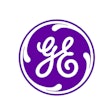Radiology's shift to the digital domain brings numerous benefits but also new medicolegal concerns, including questions about the appropriate use of electronic signatures.
"Few things in medicine are as sacrosanct as the integrity of the patient's medical record and the duty of the physician to formulate and preserve it accurately," said Dr. Leonard Berlin, chairman of radiology at Rush North Shore Medical Center in Skokie, IL. Berlin discussed e-signatures during a refresher course on avoiding legal pitfalls in the e-radiology department at the 2002 RSNA meeting in Chicago.
A protective attitude towards medical records is reflected in the opinions of courts, the U.S. government, regulatory agencies, and malpractice carriers, Berlin said. Users of e-signatures will likely need to be aware of relevant court rulings, government policies, and standards by societies and organizations.
In a 1982 decision, a New Jersey appellate court ruled that a "physician's duties to the patient cannot but encompass his affirmative obligation to maintain the integrity, accuracy, truth, and reliability of the patient's medical record. The doctor's obligation in this regard is no less compelling than his duties respecting the diagnosis and treatment of the patient," Berlin said.
The American College of Radiology's Standard for Communication states that "the final report should be proofread to minimize typographical errors, deleted words, and confusing or conflicting statements." The standard also indicates that electronic or rubber-stamp signature devices instead of a written signature are acceptable if access to them is secure, Berlin said.
The Medicare program's conditions for participation mandate that the radiologist or other practitioner who performs radiology services must sign reports of his or her interpretations, Berlin said. The U.S. Centers for Medicare and Medicaid Services (CMS) also require that all entries placed in the medical record be authenticated and dated promptly by the person responsible for providing the service furnished.
For its part, the Joint Commission on Accreditation of Healthcare Organizations (JCAHO) says that every medical record entry should be dated, its author identified, and when necessary, authenticated -- the process used to verify that an entry is incomplete and final, Berlin said. Routine x-ray reports do not require authentication.
"JCAHO has eliminated its blanket requirement that radiologists sign all reports," he said. "Each hospital has its own discretion as to whether it requires radiologists to sign the reports."
While it's clear that these sources expect radiologists to sign their own reports, it's not always possible in the real world, Berlin said. A large number of reports are produced every day in most departments, and radiologists are not always on the premises, owing to vacations, illness, and CME courses. This leads to radiologists sometimes having to sign reports on behalf of other radiologists. Still, as voice recognition permeates the radiology community, the problem of ensuring radiologist availability to sign their own reports could be completely solved, Berlin said.
Who is liable?
In any event, if a radiologist signs a report dictated by a colleague, who would be responsible or legally liable for any errors resulting in patient injury? The signing radiologist is potentially liable for errors arising from failure to proofread the report, and for errors that remain unrecognized in the report because the signing radiologist failed to review the images, Berlin said.
To Berlin's knowledge, no legal cases have dealt specifically with the signature requirements of radiologists. However, the 1987 New Jersey appellate court case of Jenoff versus Gleason may have relevance, he said.
In that case, a radiologist in a New Jersey hospital dictated a preoperative chest film showing a 2-cm mass that was possibly carcinoma, but the radiologist did not verbally contact the orthopedic surgeon, Berlin said. When the patient was discharged shortly thereafter, the orthopedic surgeon stated in the discharge summary that the patient's chest x-ray was unremarkable, even though he had not seen the x-ray or the x-ray report.
The patient later turned out to have cancer, and subsequently died. A malpractice case ensued, and the court ruled that the orthopedic surgeon was negligent in signing a discharge summary that reported unremarkable chest x-ray findings, Berlin said.
"The court ruling likely applies to all physicians and radiologists," he said. "Clearly, by signing a report, the physician attests to the accuracy of information contained in that report."
Jury reaction
If a radiologist signs a report for a colleague without reviewing the images and proofreading it, the jury reaction in a legal dispute would likely not be positive, Berlin said.
"How do you think the jury is going to react when a defendant radiologist takes the witness stand and says, 'I signed the report on behalf of my colleague, but I really had no duty to review the content of the radiographs because my colleague had already done that?'" Berlin said. "Or if the defendant radiologist says, 'Well, I was just too busy to re-read it and proofread the report.' Or if (he said) that the films were already read by another radiologist and (therefore) he had no duty to read the films, even though he signed the report?"
A plaintiff's attorney would likely infer to the jury that the radiologist appeared arrogant, callous, or careless, he said.
In a situation where a report needed to be signed but the interpreting radiologist isn't available, one alternative might be to have a colleague electronically sign the interpreting radiologist's name on his or her behalf. The downside, of course, is that it could come up in court that the interpreting radiologist had electronically signed the report at a time when he or she was out of town, away, or sick, Berlin said.
"That could be portrayed as fraud and a cover-up to the jury," he said.
Risk management
Ultimately, radiologists need to be aware that by signing a report, they are attesting to its accuracy, Berlin said. And should information in a report be inaccurate, the physician whose signature appears in the report may bear responsibility for any patient injury that results.
To help avoid this problem, Berlin suggests that preliminary or temporary reports be used as much as possible to obviate need for immediate official authentication. Radiologists should sign a colleague's report only when absolutely necessary, he said.
"The signing radiologist should somehow acknowledge his or her role as a proxy (for the interpreting radiologist," Berlin said. "But recognize that when all is said and done, there is always potential liability."
By Erik L. RidleyAuntMinnie.com staff writer
March 28, 2003
Related Reading
PACS sparks increase in hospital revenue, February 21, 2003
Legal ground rules guide international teleradiology practice, February 20, 2003
Offsite ASP archive fulfills disaster-recovery, backup requirements, January 21, 2003
PACS firms integrate, broaden product lines, November 18, 2002
Copyright © 2003 AuntMinnie.com




















